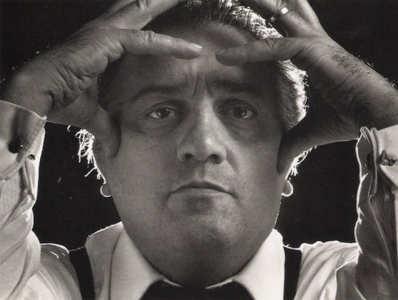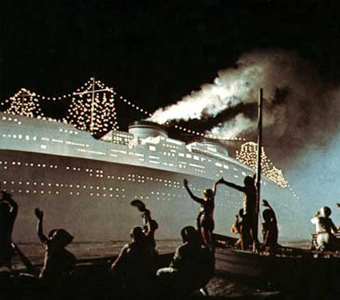FEDERICO FELLINI (1920, 1993)
Italian Film Maker and Screenwriter


American and European Art Films were banned in Germany during the Nazi period, so Horst’s cohort didn’t begin to see them until well after the war. Les Enfant du Paradis (1945) was one of the first of these, and became one of Horst’s favorite films.
Fellini began writing Italian Neorealist screenplays in 1940, then began making his own films in 1950. In 1954 with La Strada he broke with the Neorealist school, with a more allegorical mythic tale. Horst probably saw this while still in Germany. When Horst arrived in Berkeley he discovered that Fellini’s films were immensely popular . So over time, he saw nearly everything Fellini made. Horst was especially fond of 8 ½ , La Dolce Vita and Amacord.
Amacord was released while Horst was living in Fairfax. It’s gentle humor, frank sexuality, vague surrealism and unsentimental nostalgia explore themes similar to Horst's. Horst received confirmation from this that his work was in sync with his contemporaries.
Like Horst, Fellini became aware of Carl Jung’s work, and read his autobiography, Memories, Dreams, Reflections as well as Man and His Symbols. A Jungian psychoanalyst suggested that Fellini write down his dreams, and consult the I Ching, which Horst was doing at the same time.
Starting in the 1970’s Horst read Carlos Castaneda’s Trilogy: The Teachings of Don Juan: A Yaqui way of Knowedge, A Separate Reality, and Journey to Ixtlan. These books vividly recount Castaneda’s experiences with shamanism and psychotropic plants under the supervision of the Mexican “Man of Knowledge”, Don Juan Matus. These books were required reading for the bay area psychedelic movement of the 60’s and 70’s.
Fellini also became fascinated with Castaneda's adventures, and contacted him for the film rights. Fellini traveled to Los Angeles and then into the Mexican Jungles with Castaneda. Fellini even wrote a screenplay titled Viaggio a Tulun, but soon after Castaneda disappeared, and the film was never made.
Fellini frequently satirized characters with strong political views, but avoided actual political messages in his films. These characters are like clowns whose total ineffectiveness symbolizes the futility of politics in general. Horst and Fellini shared an aversion to politics and polemics in art. Doubtless, the suffocating propaganda of the Fascists and Nazis disillusioned them both.
The image above from Amacord depicting an perposterously large Ocean Liner. This scene delighted Horst, and is similar to something he might have painted. A painting that particularly captures Fellini's humor' is ...
The Swimmer